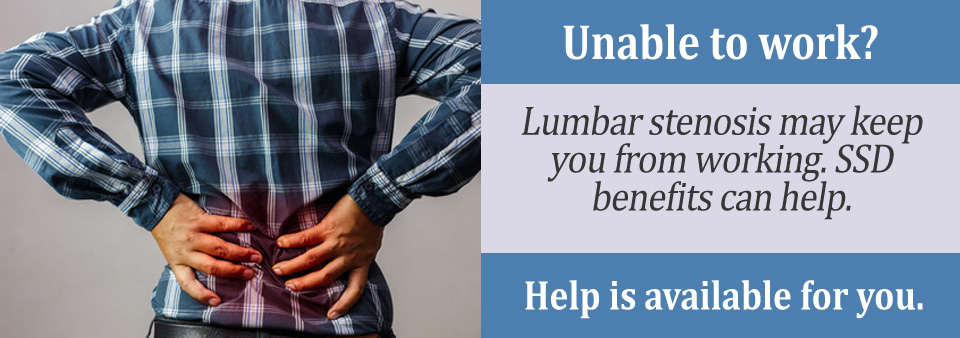If the Social Security Administration (SSA) denied your lumbar stenosis claim, you should know that you have the right to appeal a lumbar stenosis disability claim.
With the Social Security Administration (SSA) denying a majority of Social Security Disability (SSD) claims, the chances are good that you might get denied Social Security with lumbar stenosis. Appealing the SSA’s decision can include undergoing a Residual Functional Capacity (RFC) assessment that is conducted by a medical examiner from the SSA.
The Keys to Winning an Appeal for Disability Benefits
A lumbar stenosis denied disability claim means you should file an appeal to receive financial assistance. Starting over by submitting a new claim can take much longer than the appeal process. Getting a lumbar stenosis denied disability claim overturned involves making a stronger case than you did the first time around.
Severity of Symptoms
As the official guide that the SSA used to make disability claim decisions, the Blue Book lists lumbar stenosis in Section 1.04. However, it is not enough to have lumbar stenosis listed in the Blue Book as a medical condition that qualifies an applicant for disability benefits. You also have to meet the severity of symptoms criteria listed in the Blue Book. If you do not match the severity of the symptoms for lumbar stenosis, you can expect the SSA to deny you disability benefits.
Lumbar stenosis applies pressure on the spine and the nerves running through the spinal cord. Severe lumbar stenosis triggers excruciating pain and dramatic weakness of the muscles. If you can connect your severe symptoms to work performance issues, then you have started on the path to getting your lumbar stenosis denied claim overturned.
Proving the Presence of Severe Symptoms
Proving the presence of severe symptoms requires you to undergo a battery of tests. Your doctor should take x-rays of your back to reveal any structural changes to the spinal cord. X-rays can also detect bone spurs that have the potential to trigger intense pain.
A magnetic resonance imaging (MRI) test sends radio waves through the spine to detect the severity of the damage. Computerized Tomography (CT) tests combine x-ray images from across the body to give your physician a complete view of the severity of your lumbar stenosis.
Undergo a Residual Functional Capacity Assessment
Another helpful tool for the SSA is called a Residual Functional Capacity (RFC) assessment. An RFC determines the maximum you can accomplish at work while dealing with lumbar stenosis symptoms. The team of medical examiners at the SSA reviews your medical history to determine whether your lumbar stenosis symptoms have worsened over time.
Tests conducted by an examiner from the SSA can include stress observations, such as seeing how much weight you can lift and whether the symptoms have limited your mobility. An RFC assessment reflects the type of job held by the applicant who is trying to overturn a denied disability claim.
Schedule a Free Case Evaluation
Having a disability claim denied should not cause you to panic. However, it should motivate you to act with a sense of urgency because the SSA provides a limited window of opportunity for you to file an appeal. You have 60 days to appeal a denied claim, with the clock starting on your appeal the day you received the notice from the SSA about your denied claim.
The first thing on your to-do list should be to contact a Social Security disability attorney who can offer a free case evaluation. Your lawyer also can prepare you for an RFC assessment and help you organize the medical documents you need to win your appeal.
